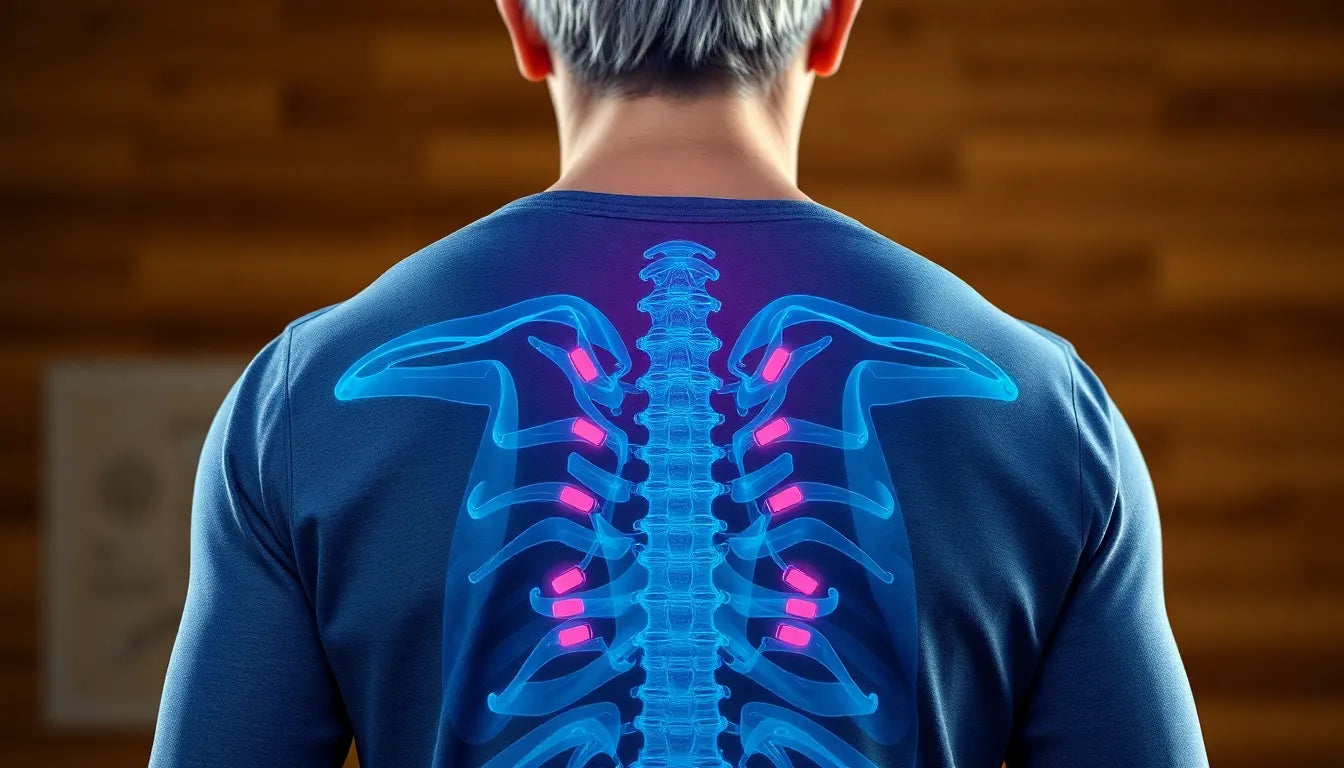A herniated disc, often referred to as a slipped or ruptured disc, is a condition affecting the spine where the soft center of a spinal disc pushes through a crack in the tougher exterior casing. This can lead to pain, numbness, or weakness in an arm or leg. Understanding this condition is crucial as it is a common cause of back pain and can significantly impact one's daily life. According to recent statistics, approximately 2% of adults experience a herniated disc at some point, highlighting its prevalence and the importance of effective management strategies.
the impact of herniated discs on daily life
The effects of a herniated disc can range from mild discomfort to debilitating pain that interferes with daily activities. Simple actions such as bending, lifting, or even sitting for extended periods can become challenging. This condition can affect anyone, but it is most common in individuals aged 30 to 50. Moreover, herniated discs are a leading cause of work absenteeism and disability, making it essential to address and manage the symptoms effectively.
introducing the herniated disc medical handbook
In the quest for relief and understanding, a comprehensive medical handbook dedicated to herniated discs emerges as an invaluable resource. This handbook serves as a bridge between patients and healthcare providers, offering a wealth of information tailored to both audiences. It is designed to demystify the condition by providing clear, concise explanations and practical advice on managing symptoms, thus empowering individuals to take control of their health.
the necessity of a comprehensive guide
While there are numerous resources available, many fall short of providing a balanced perspective that combines clinical accuracy with patient-friendly language. This gap underscores the need for a comprehensive guide that not only explains the medical intricacies of herniated discs but also offers real-world solutions for everyday challenges. Such a resource is crucial for those seeking to understand their condition fully and explore a range of treatment options, from conservative care to surgical interventions.
The herniated disc medical handbook aims to fill this void by presenting information in an accessible format, ensuring that both patients and healthcare providers can benefit from its contents. By integrating expert medical advice with practical tips, this guide supports informed decision-making and promotes a proactive approach to managing herniated disc symptoms.
clinical perspectives on herniated discs
When approaching the topic of herniated discs from a clinical perspective, it's essential to consider the guidelines set forth by the North American Spine Society (NASS). These guidelines offer a comprehensive framework for the diagnosis and treatment of lumbar disc herniation, particularly when radiculopathy is present. The natural history of lumbar disc herniation indicates that many cases tend to improve over time with conservative treatment. Accurate evaluation is critical in this process, as it helps determine the appropriate course of action, whether it be non-invasive treatments or surgical intervention.
In terms of treatment options, NASS emphasizes a balanced approach that considers both conservative and surgical methods. Conservative treatments often include physical therapy, medications, and lifestyle modifications, while surgical options might be considered for patients who do not respond to initial treatments. The ultimate goal is to optimize care quality and facilitate functional recovery, tailoring the treatment plan to the individual's specific needs and circumstances.
patient-oriented insights into herniated discs
Understanding herniated discs from a patient-oriented perspective involves breaking down complex medical concepts into more accessible terms. Resources like the Merck Manuals and the American Association of Neurological Surgeons (AANS) provide valuable insights into the causes, symptoms, and diagnosis of herniated discs. For instance, the "jelly donut" analogy is a popular way to explain spinal anatomy and how herniation occurs. Imagine a spinal disc as a jelly donut, where the softer center pushes through a crack in the tougher outer layer, similar to jelly oozing out when the donut is squeezed.
The diagnostic process for a herniated disc typically involves a combination of physical examinations and imaging techniques, such as MRI scans. These tools help healthcare providers assess the extent of the herniation and develop an appropriate treatment plan. By understanding the diagnostic process, patients can better navigate their healthcare journey and make informed decisions about their treatment options.
conservative care and physical therapy for herniated discs
Physical therapy plays a vital role in the conservative management of herniated discs. According to MyActionPT, individualized physical therapy programs can significantly aid in recovery by addressing specific symptoms and functional limitations. These programs often include exercises designed to strengthen the muscles supporting the spine, improve flexibility, and reduce pain.
Non-surgical interventions, such as physical therapy, are often preferred as initial treatment options due to their lower risk profile and potential for positive outcomes. In addition to physical therapy, lifestyle modifications and ergonomic aids can be integral parts of a comprehensive management plan. Simple changes, such as maintaining proper posture, using supportive seating, and incorporating regular exercise into daily routines, can help alleviate symptoms and prevent further injury.
The herniated disc medical handbook serves as a valuable resource for both patients and healthcare providers, offering a blend of clinical guidelines and practical advice. By empowering individuals with the knowledge and tools needed to manage their condition effectively, this handbook promotes better health outcomes and enhances quality of life.
Empowering patients through education
Empowering patients with knowledge is a cornerstone of effective herniated disc management. The University of Maryland emphasizes the importance of patient education in understanding spinal health and the mechanics of disc herniation. By grasping the basics of spinal anatomy and the causes of herniated discs, patients can make informed decisions about their care and actively participate in their recovery journey.
Preventive measures play a crucial role in managing and potentially preventing herniated discs. Maintaining a healthy weight, practicing proper posture, and engaging in regular exercise are foundational strategies. These lifestyle choices help reduce stress on the spine, minimizing the risk of disc herniation. Ergonomic products, such as supportive chairs and cushions, can further aid in daily management by promoting spinal alignment and comfort.
Concluding thoughts
The integration of clinical guidelines with practical advice is essential for optimal herniated disc management. By combining expert medical insights with real-world solutions, individuals can navigate their condition with confidence. The herniated disc medical handbook serves as a comprehensive resource, bridging the gap between clinical knowledge and everyday application. This approach not only enhances understanding but also empowers patients to take proactive steps towards relief and improved quality of life.
Frequently asked questions
What is a herniated disc, and how does it occur?
A herniated disc, also known as a slipped or ruptured disc, occurs when the soft inner core of a spinal disc pushes through a tear in the tougher outer layer. This can happen due to age-related wear and tear, injury, or excessive strain on the spine.
What are the common symptoms of a herniated disc?
Common symptoms include pain, numbness, and weakness, often in the arms or legs, depending on the location of the herniation. These symptoms occur because the herniated disc can press on nearby nerves, causing discomfort and functional impairment.
How is a herniated disc diagnosed?
Diagnosis typically involves a physical examination and imaging tests such as MRI or CT scans. These tools help healthcare providers assess the extent of the herniation and determine the most appropriate treatment plan.
What are the treatment options for a herniated disc?
Treatment options range from conservative methods like physical therapy, medications, and lifestyle changes to surgical interventions for more severe cases. The choice of treatment depends on the severity of symptoms and the individual's overall health.
Can lifestyle changes help manage or prevent herniated discs?
Yes, lifestyle changes such as maintaining a healthy weight, practicing good posture, and engaging in regular exercise can help manage symptoms and reduce the risk of herniated discs. Ergonomic aids, like supportive chairs and cushions, can also play a significant role in prevention and management.
Sources
- North American Spine Society (NASS). "Clinical Guideline for Lumbar Disc Herniation."
- Merck Manuals. "Herniated Disc."
- American Association of Neurological Surgeons (AANS). "Herniated Disc."
- University of Maryland Medical Center. "Patient’s Guide to Lumbar Herniated Disc."
- MyActionPT. "Physical Therapist’s Guide to Herniated Disc."
- OrthoInfo (AAOS). "Herniated Disk."


















